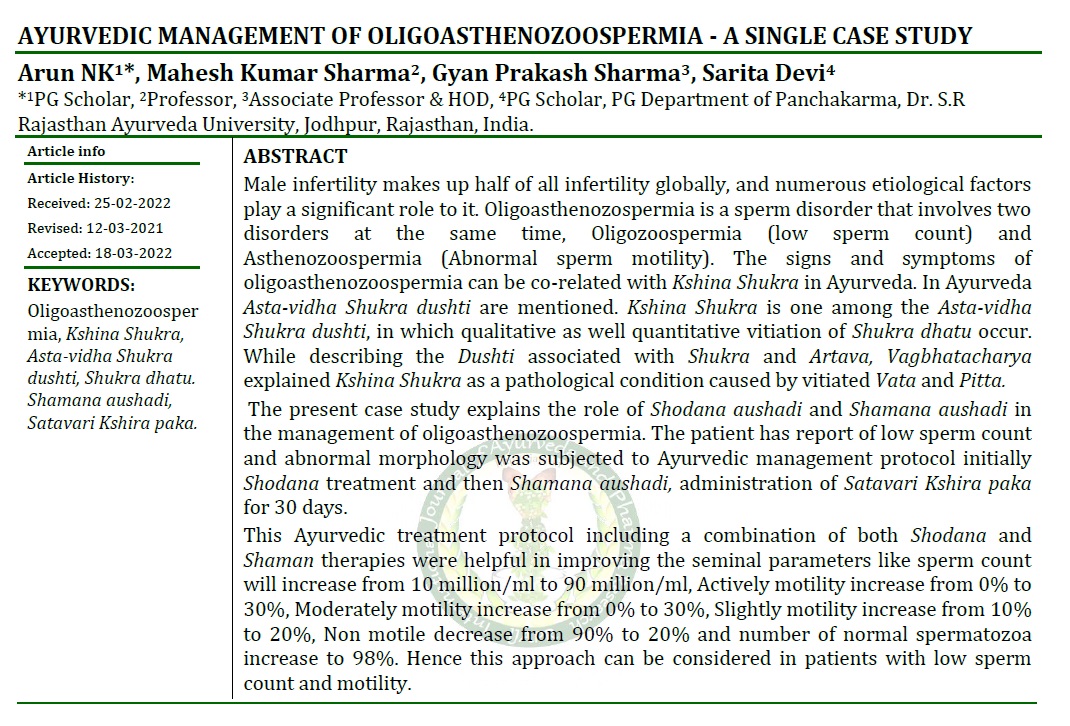Ayurvedic Management of Oligoasthenozoospermia - A Single Case Study
Abstract
Male infertility makes up half of all infertility globally, and numerous etiological factors play a significant role to it. Oligoasthenozospermia is a sperm disorder that involves two disorders at the same time, Oligozoospermia (low sperm count) and Asthenozoospermia (Abnormal sperm motility). The signs and symptoms of oligoasthenozoospermia can be co-related with Kshina Shukra in Ayurveda. In Ayurveda Asta-vidha Shukra dushti are mentioned. Kshina Shukra is one among the Asta-vidha Shukra dushti, in which qualitative as well quantitative vitiation of Shukra dhatu occur. While describing the Dushti associated with Shukra and Artava, Vagbhatacharya explained Kshina Shukra as a pathological condition caused by vitiated Vata and Pitta.
The present case study explains the role of Shodana aushadi and Shamana aushadi in the management of oligoasthenozoospermia. The patient has report of low sperm count and abnormal morphology was subjected to Ayurvedic management protocol initially Shodana treatment and then Shamana aushadi, administration of Satavari Kshira paka for 30 days.
This Ayurvedic treatment protocol including a combination of both Shodana and Shaman therapies were helpful in improving the seminal parameters like sperm count will increase from 10 million/ml to 90 million/ml, Actively motility increase from 0% to 30%, Moderately motility increase from 0% to 30%, Slightly motility increase from 10% to 20%, Non motile decrease from 90% to 20% and number of normal spermatozoa increase to 98%. Hence this approach can be considered in patients with low sperm count and motility.
Downloads

Copyright (c) 2022 International Journal of Ayurveda and Pharma Research

This work is licensed under a Creative Commons Attribution-NonCommercial-ShareAlike 4.0 International License.






